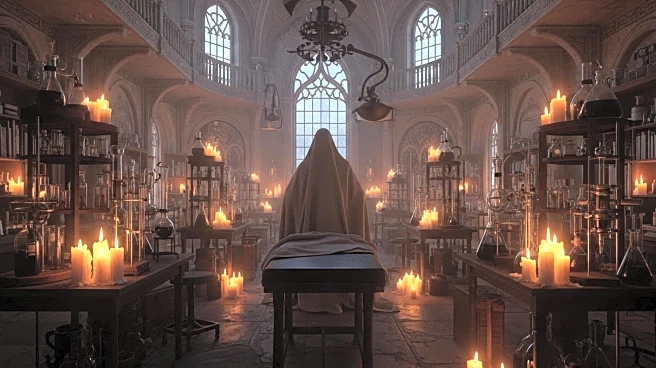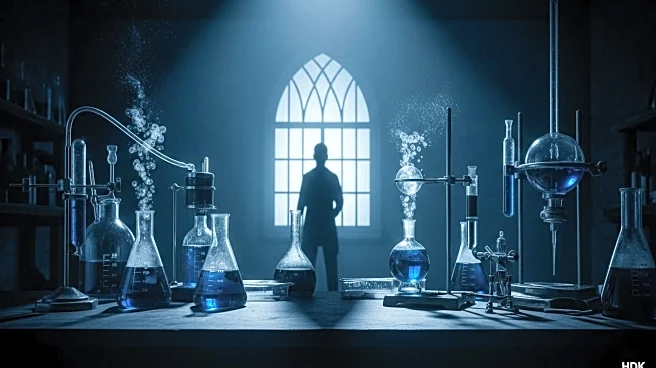What's Happening?
Guillermo del Toro's 'Frankenstein' premiered at the Venice Film Festival, featuring Oscar Isaac as Victor Frankenstein and Jacob Elordi as the creature. The film, funded by Netflix, is a long-awaited project for del Toro, who has been passionate about the story since childhood. The adaptation explores the perspectives of both Frankenstein and his creation, highlighting themes of creation, abandonment, and empathy. The film's production involved real sets and minimal CGI, emphasizing del Toro's commitment to traditional filmmaking techniques.
Why It's Important?
Del Toro's 'Frankenstein' represents a significant moment in cinematic storytelling, blending traditional filmmaking with modern themes. The film's exploration of empathy and understanding challenges viewers to reconsider societal attitudes towards those perceived as different. By using real sets, del Toro reinforces the value of physical craftsmanship in an era dominated by digital effects. The film's release strategy, with a limited theatrical run before streaming, reflects changing industry dynamics and could influence future distribution models.
What's Next?
Following its Venice premiere, 'Frankenstein' will be released theatrically on October 17, 2025, before streaming on Netflix. The film's reception at the festival and subsequent release could impact del Toro's future projects and the industry's approach to high-budget adaptations. The film's themes may inspire discussions on empathy and societal treatment of 'others,' potentially influencing cultural narratives and future cinematic explorations.
Beyond the Headlines
Del Toro's adaptation challenges traditional horror narratives by humanizing the creature and exploring themes of empathy and understanding. The film's emphasis on real sets and minimal CGI highlights the importance of physical craftsmanship in storytelling. By presenting the creature's perspective, the film encourages viewers to reconsider societal attitudes towards those perceived as different, potentially influencing cultural perceptions of monstrosity and humanity.











